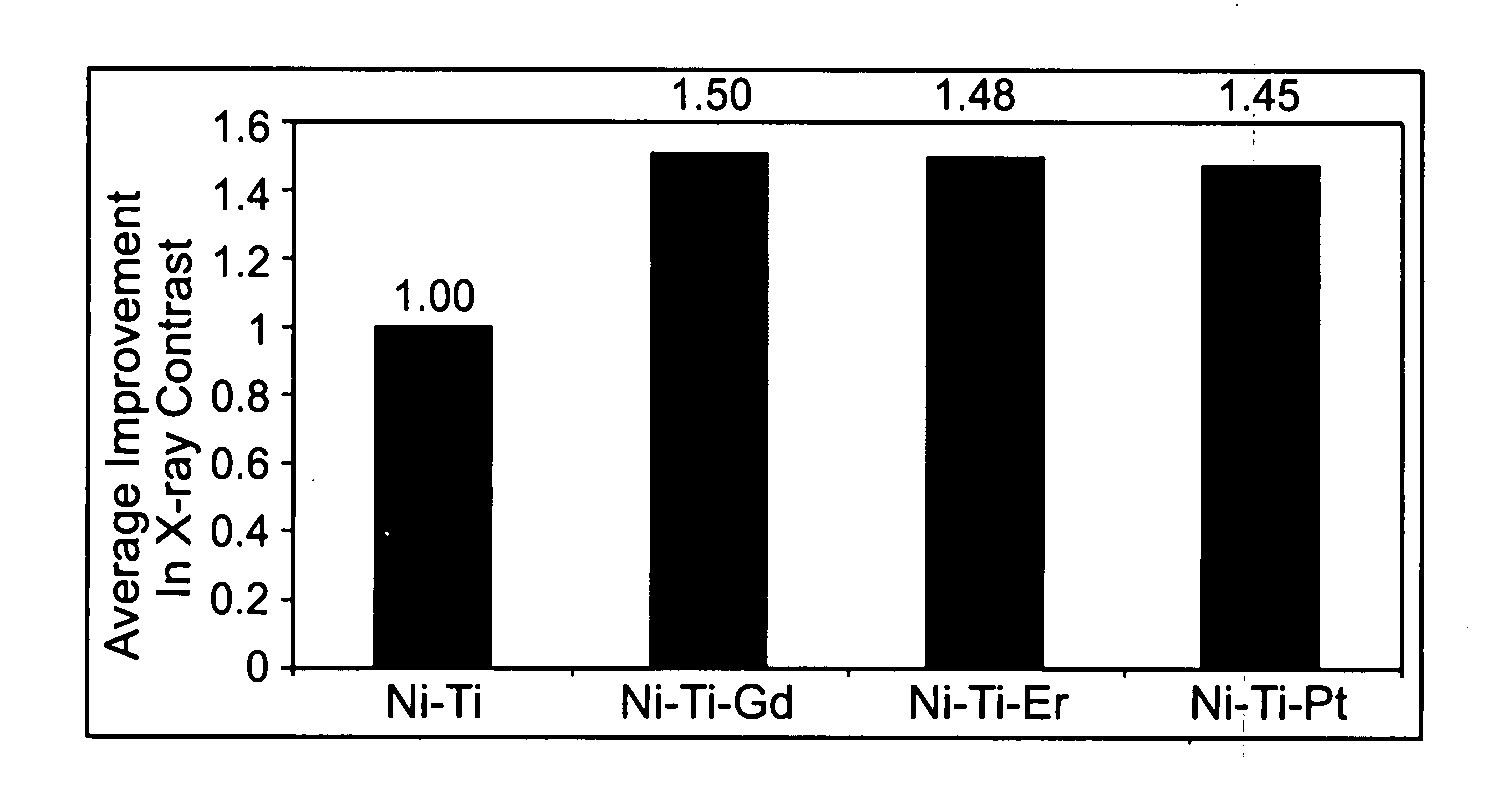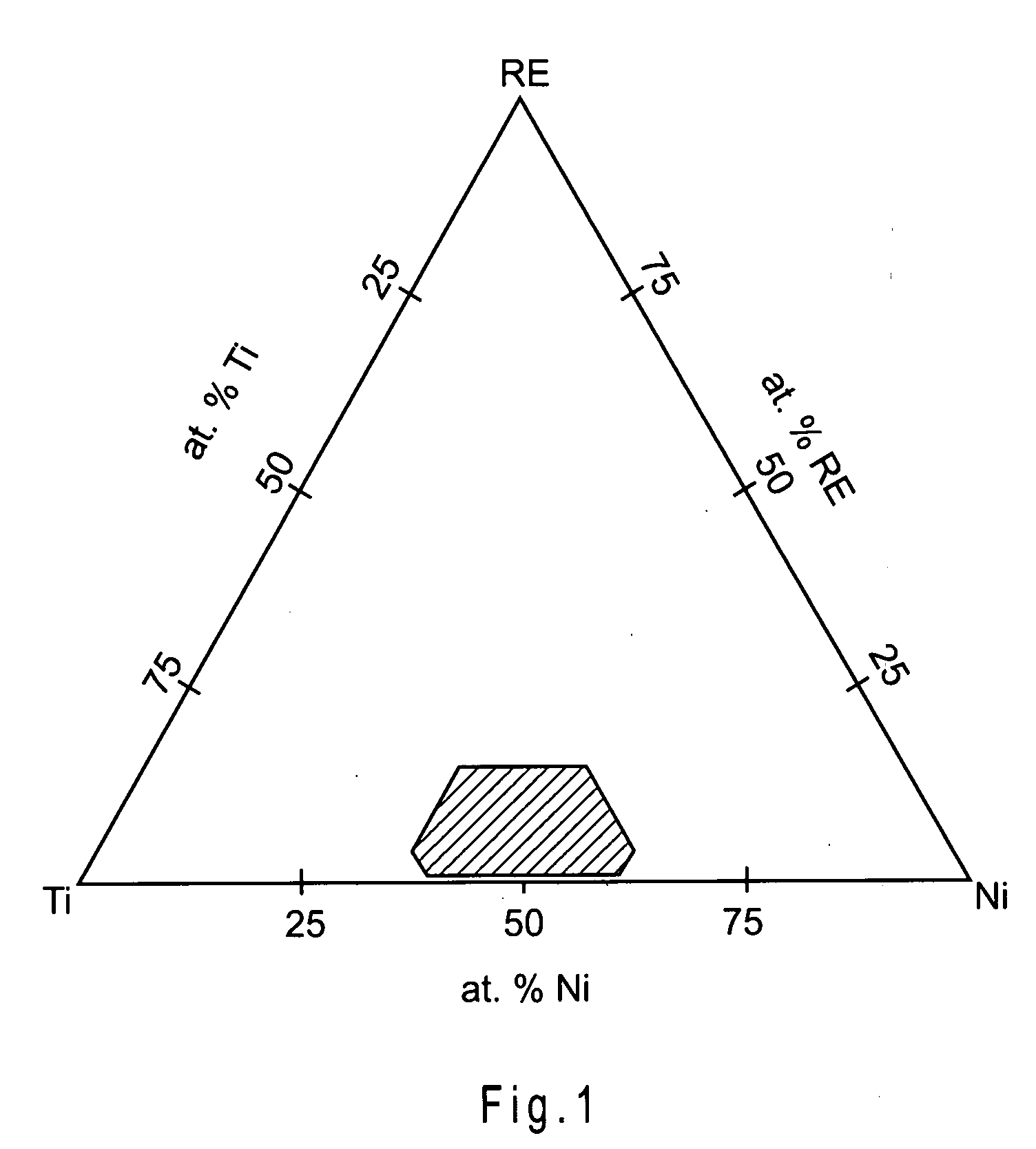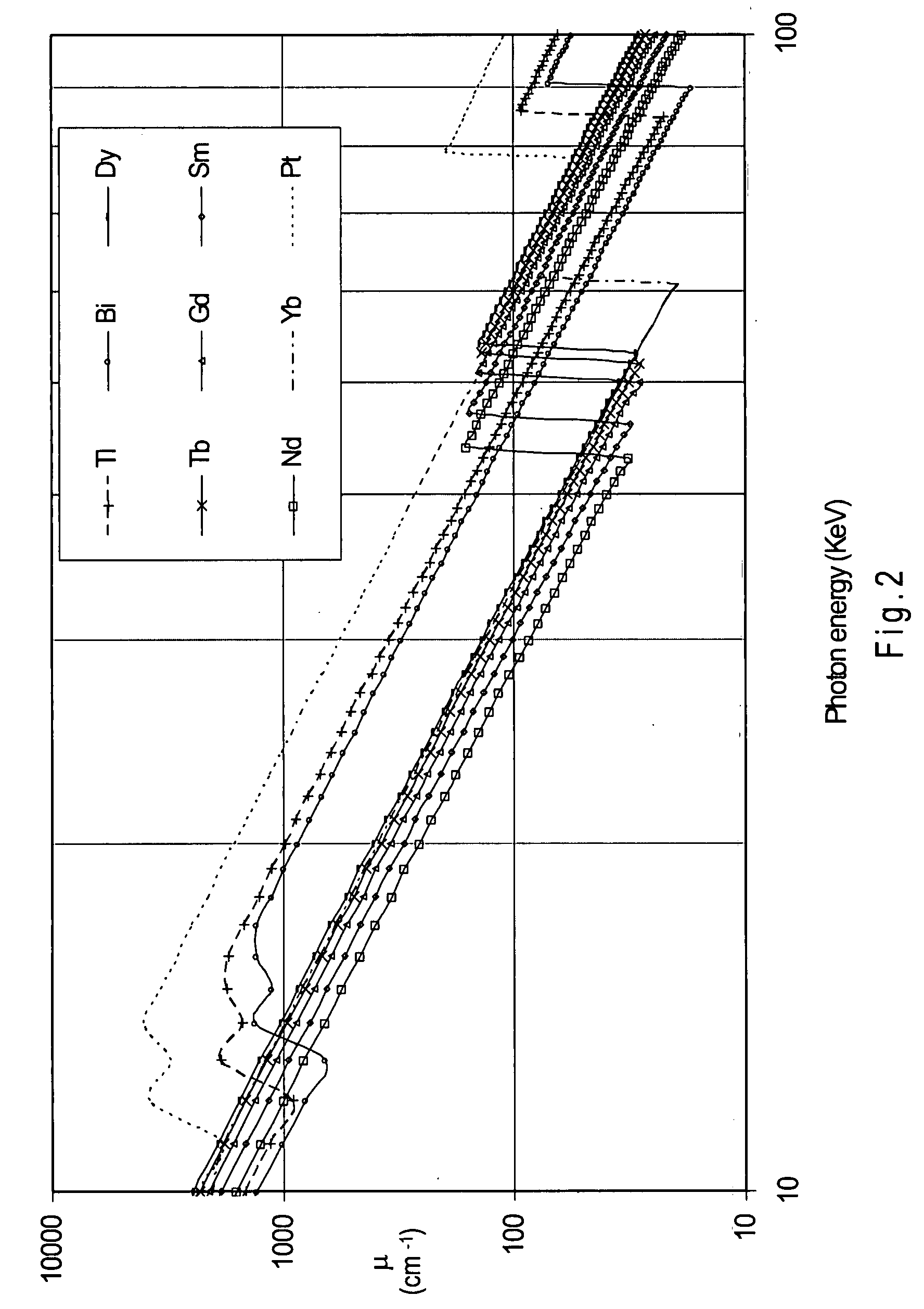Nickel-titanium alloy including a rare earth element
a rare earth element and alloy technology, applied in the field ofnickeltitanium alloys, can solve the problems of difficult visualization of devices from outside the body using non-invasive imaging techniques, difficulty in accurately placing and/or manipulating and clinicians may not be able to accurately place and/or manipulate nitinol stents or baskets within the body vessel
- Summary
- Abstract
- Description
- Claims
- Application Information
AI Technical Summary
Benefits of technology
Problems solved by technology
Method used
Image
Examples
example 1
[0145]Ingots of several rare-earth doped nickel-titanium alloys were produced using vacuum induction melting (VIM). Specifically, Ni—Ti—Er, Ni—Ti—La, Ni—Ti—Gd, and Ni—Ti—Nd, each containing 7.5 at. % rare earth element, were melted. A Ni—Ti-7.5 at. % Pt ingot and a binary nickel-titanium alloy were also produced by VIM for comparison. The ingots of 2.25 inches in diameter and 3 inches in height were rolled to form plates. Each of the Ni—Ti—X plates showed some interdendritic cracking as a consequence of rolling, although the Er-doped nickel-titanium alloy seemed to withstand rolling the best. The rolled plates were soaked for 24 hours at 850° C. and then hot worked to a size of slightly greater than 1 inch (2.54 cm) in height. The composition of each specimen is given in weight percent in Table 5. The concentration of carbon, oxygen, and nitrogen impurities is also shown in parts per million (ppm).
TABLE 5Composition Data for Ni—Ti and Ni—Ti—X(X = Er, La, Gd, Nd, or Pt) SpecimensNitr...
example 2
[0153]Twelve additional alloys having the compositions given in Table 9 below are being melted. After melting and casting, the alloys may undergo a homogenization heat treatment at 1000° C. for 72 hours. The homogenized alloys may then be mechanically worked into specimens as described above.
TABLE 9Composition Data for Ni—Ti—Er and Ni—Ti—Er—X(X = Pd or Cr) SpecimensNiTiErPdCr(at. %)(at. %)(at. %)(at. %)(at. %)Series A51454514441514441Series B52.543.5452.542.54152.542.541Series C55414554041554041Series X474944551443534
[0154]A nickel-titanium alloy comprising nickel, titanium, and at least one rare earth element (RE) has been described. A medical device comprising at least one component including the nickel-titanium alloy has also been described. The radiopaque Ni—Ti-RE alloy has improved radiopacity compared to previous nickel-titanium alloys. Consequently, the medical device has better visibility during non-invasive imaging procedures, such as x-ray fluoroscopy. The nickel-titanium ...
PUM
| Property | Measurement | Unit |
|---|---|---|
| austenite finish temperature | aaaaa | aaaaa |
| finish temperature | aaaaa | aaaaa |
| temperature | aaaaa | aaaaa |
Abstract
Description
Claims
Application Information
 Login to View More
Login to View More - R&D
- Intellectual Property
- Life Sciences
- Materials
- Tech Scout
- Unparalleled Data Quality
- Higher Quality Content
- 60% Fewer Hallucinations
Browse by: Latest US Patents, China's latest patents, Technical Efficacy Thesaurus, Application Domain, Technology Topic, Popular Technical Reports.
© 2025 PatSnap. All rights reserved.Legal|Privacy policy|Modern Slavery Act Transparency Statement|Sitemap|About US| Contact US: help@patsnap.com



